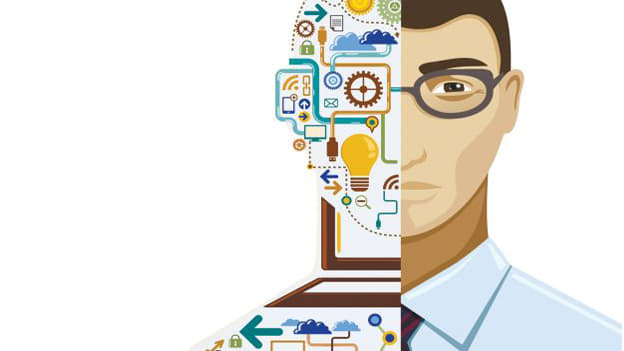How companies & employees can co-exist with and benefit from Intelligent Automation

The COVID-19 pandemic sparked a permanent shift in how businesses across every industry view artificial intelligence (AI) and automation. Whereas previously many companies saw these technologies as a nice-to-have, today they’re an imperative. On one hand, they are a means to be more productive in an all-digital, work-from-anywhere world. On the other, they're freeing up employees from repetitive processes, enabling them to move fast and engage customers with empathy when customers need it most.
The International Data Corp (IDC) predicts that global spending on AI will double over the next four years – reaching $110 billion in 2024 (up from $50 billion in 2020). AI is helping us to save time and boost productivity, freeing employees from repetitive work, but humans will always be front and center when it comes to automation, building meaningful relationships with customers. With automation and AI - “intelligent automation” - we can solve numerous problems that neither companies or these technologies could tackle on their own.
AI is giving businesses a competitive advantage
With automation, using business rules to tell a system what to do, programmers can reduce the need for human intervention and errors. AI, on the other hand, uses algorithms to simulate how the human brain works by performing astonishing feats of pattern recognition at scale. AI tools accurately interpret what customers need and automation executes on those insights.
During the pandemic, when we think of the need for intelligent automation, two examples come to mind. Where players in the travel and hospitality sector such as SpiceJet and RedBus, faced a significant rise in case volume, with AI-powered chatbots they’ve managed to scale their customer services, report issues and receive credits or refunds. Where entire workforces have shifted to working from home, AI-powered recommendations are helping IT departments support requests from teams, for instance, for new equipment. Efficiently analysing historical data allows IT teams to predict which type of equipment to deploy based on a user's parameters and needs. By using an automated workflow, items are quickly shipped while the inventory system is updated.
AI is also giving businesses a competitive advantage. Take sales teams, for example. With the ability to see insights, key moments and trends highlighted in conversational data, they’re better able to understand what's going on in customer calls. In real-time customer service agents can see relevant next best actions. Integrating insights into action saves teams time and helps them make better decisions. It also allows them to use their skills more effectively, focus on more complicated cases, and to empathise with customers and build rapport.
Implementation of intelligent automation
Automation doesn't have to be intimidating. Here are some tips to get started:
- Starting small: Identify daily tasks and processes that are repetitive - these might include sending a certain kind of email or copying information across systems. Early piloting AI and automation, even around a minor task, can generate quick wins and momentum.
- Ease of use: Good automation and AI software has an intuitive design that does not always need a training manual. Whether they're customer-facing or on the back end, tools should be seamless and simple (for instance, drag-and-drop, low-code tools). For more complex processes, individuals might need a digital training platform to help employees skill up and make the most of the technology.
- Standardise automation with an integrated platform: Adopt a low-code platform that enables teams across the company to seamlessly solve problems big and small.
- Consider business-wide benefits: AI and automation can benefit numerous areas of a business. For instance, a human resources executive can invest in tools that improve workflows to drive improved employee satisfaction and retention. Similarly, a CIO can accelerate a process by implementing a standard platform that enables rules-based automation and integrates across company systems.
- Measure success through KPIs: When evaluating the impact of intelligent automation initiatives, track the metrics your company values; which could range from productivity, revenue growth, time savings, or perhaps customer and employee satisfaction.
As the digital economy evolves at pace, now is the time to invest in customer relationships, while empowering employees and increasing their workplace satisfaction. Together, intelligent automation frees up employees to do what humans do best – make decisions and build relationships.












